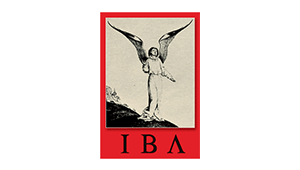A musical instrument is a device created or adapted to make musical sounds. In principle, any object that produces sound can be considered a musical instrument—it is through purpose that the object becomes a musical instrument. A person who plays a musical instrument is known as an instrumentalist. The history of musical instruments dates to the beginnings of human culture. Early musical instruments may have been used for rituals, such as a horn to signal success on the hunt, or a drum in a religious ceremony. Cultures eventually developed composition and performance of melodies for entertainment. Musical instruments evolved in step with changing applications and technologies.
The date and origin of the first device considered a musical instrument is disputed. The oldest object that some scholars refer to as a musical instrument, a simple flute, dates back as far as 67,000 years. Some consensus dates early flutes to about 37,000 years ago. However, most historians believe that determining a specific time of musical instrument invention is impossible, as many early musical instruments were made from animal skins, bone, wood, and other non-durable materials.
Musical instruments developed independently in many populated regions of the world. However, contact among civilizations caused rapid spread and adaptation of most instruments in places far from their origin. By the Middle Ages, instruments from Mesopotamia were in maritime Southeast Asia, and Europeans played instruments originating from North Africa. Development in the Americas occurred at a slower pace, but cultures of North, Central, and South America shared musical instruments.
By 1400, musical instrument development slowed in many areas and was dominated by the Occident. During the Classical and Romantic periods of music, lasting from roughly 1750 to 1900, many new musical instruments were developed. While the evolution of traditional musical instruments slowed beginning in the 20th century, the proliferation of electricity led to the invention of new electric instruments, such as electric guitars, synthesizers and the theremin.
Musical instrument classification is a discipline in its own right, and many systems of classification have been used over the years. Instruments can be classified by their effective range, material composition, size, role, etc. However, the most common academic method, Hornbostel–Sachs, uses the means by which they produce sound. The academic study of musical instruments is called organology.
The guitar is a fretted musical instrument that typically has six strings. It is held flat against the player's body and played by strumming or plucking the strings with the dominant hand, while simultaneously pressing the strings against frets with the fingers of the opposite hand. A plectrum or individual finger picks may be used to strike the strings. The sound of the guitar is projected either acoustically, by means of a resonant chamber on the instrument, or amplified by an electronic pickup and an amplifier.
The guitar is classified as a chordophone – meaning the sound is produced by a vibrating string stretched between two fixed points. Historically, a guitar was constructed from wood with its strings made of catgut. Steel guitar strings were introduced near the end of the nineteenth century in the United States;[1] nylon strings came in the 1940s.[1] The guitar's ancestors include the gittern, the vihuela, the four-course Renaissance guitar, and the five-course baroque guitar, all of which contributed to the development of the modern six-string instrument.
There are three main types of modern guitar: the classical guitar (Spanish guitar/nylon-string guitar); the steel-string acoustic guitar; and the Hawaiian guitar (played across the player's lap). Traditional acoustic guitars include the flat top guitar (typically with a large sound hole) or an archtop guitar, which is sometimes called a "jazz guitar". The tone of an acoustic guitar is produced by the strings' vibration, amplified by the hollow body of the guitar, which acts as a resonating chamber. The classical Spanish guitar is often played as a solo instrument using a comprehensive fingerstyle technique where each string is plucked individually by the player's fingers, as opposed to being strummed. The term "finger-picking" can also refer to a specific tradition of folk, blues, bluegrass, and country guitar playing in the United States.
Electric guitars, introduced in the 1930s, use a pickup and amplifier that made the instrument loud enough to be heard, but also enabled manufacturing guitars with a solid block of wood needing no resonant chamber. A wide array of electronic effects units became possible including reverb and distortion (or "overdrive"). Solid-body guitars began to dominate the guitar market during the 1960s and 1970s; they are less prone to unwanted acoustic feedback. As with acoustic guitars, there are a number of types of electric guitars, including hollowbody guitars, archtop guitars (used in jazz guitar, blues and rockabilly) and solid-body guitars, which are widely used in rock music.
The loud, amplified sound and sonic power of the electric guitar played through a guitar amp has played a key role in the development of blues and rock music, both as an accompaniment instrument (playing riffs and chords) and performing guitar solos, and in many rock subgenres, notably heavy metal music and punk rock. The electric guitar has had a major influence on popular culture. The guitar is used in a wide variety of musical genres worldwide. It is recognized as a primary instrument in genres such as blues, bluegrass, country, flamenco, folk, jazz, jota, mariachi, metal, punk, reggae, rock, soul, and pops.
The piano is an acoustic, stringed musical instrument invented in Italy by Bartolomeo Cristofori around the year 1700 (the exact year is uncertain), in which the strings are struck by wooden hammers that are coated with a softer material (modern hammers are covered with dense wool felt; some early pianos used leather). It is played using a keyboard, which is a row of keys (small levers) that the performer presses down or strikes with the fingers and thumbs of both hands to cause the hammers to strike the strings.
The word "piano" is a shortened form of pianoforte, the Italian term for the early 1700s versions of the instrument, which in turn derives from gravicembalo col piano e forte (key cymbal with quieter and louder)[1] and fortepiano. The Italian musical terms piano and forte indicate "soft" and "loud" respectively,[2] in this context referring to the variations in volume (i.e., loudness) produced in response to a pianist's touch or pressure on the keys: the greater the velocity of a key press, the greater the force of the hammer hitting the strings, and the louder the sound of the note produced and the stronger the attack. The name was created as a contrast to harpsichord, a musical instrument that does not allow variation in volume; compared to the harpsichord, the first fortepianos in the 1700s had a quieter sound and smaller dynamic range.[3]
A piano usually has a protective wooden case surrounding the soundboard and metal strings, which are strung under great tension on a heavy metal frame. Pressing one or more keys on the piano's keyboard causes a wooden or plastic hammer (typically padded with firm felt) to strike the strings. The hammer rebounds from the strings, and the strings continue to vibrate at their resonant frequency.[4] These vibrations are transmitted through a bridge to a soundboard that amplifies by more efficiently coupling the acoustic energy to the air. When the key is released, a damper stops the strings' vibration, ending the sound. Notes can be sustained, even when the keys are released by the fingers and thumbs, by the use of pedals at the base of the instrument. The sustain pedal enables pianists to play musical passages that would otherwise be impossible, such as sounding a 10-note chord in the lower register and then, while this chord is being continued with the sustain pedal, shifting both hands to the treble range to play a melody and arpeggios over the top of this sustained chord. Unlike the pipe organ and harpsichord, two major keyboard instruments widely used before the piano, the piano allows gradations of volume and tone according to how forcefully or softly a performer presses or strikes the keys.
Most modern pianos have a row of 88 black and white keys, 52 white keys for the notes of the C major scale (C, D, E, F, G, A and B) and 36 shorter black keys, which are raised above the white keys, and set further back on the keyboard. This means that the piano can play 88 different pitches (or "notes"), spanning a range of a bit over seven octaves. The black keys are for the "accidentals" (F?/G?, G?/A?, A?/B?, C?/D?, and D?/E?), which are needed to play in all twelve keys. More rarely, some pianos have additional keys (which require additional strings), an example of which is the Bösendorfer Concert Grand 290 Imperial, which has 97 keys.[5] Most notes have three strings, except for the bass, which graduates from one to two. The strings are sounded when keys are pressed or struck, and silenced by dampers when the hands are lifted from the keyboard. Although an acoustic piano has strings, it is usually classified as a percussion instrument rather than as a stringed instrument, because the strings are struck rather than plucked (as with a harpsichord or spinet); in the Hornbostel–Sachs system of instrument classification, pianos are considered chordophones. There are two main types of piano: the grand piano and the upright piano. The grand piano has a better sound and gives the player a more precise control of the keys, and is therefore the preferred choice for every situation in which the available floor-space and the budget will allow, as well as often being considered a requirement in venues where skilled pianists will frequently give public performances. The upright piano, which necessarily involves some compromise in both tone and key action compared to a grand piano of equivalent quality, is nevertheless much more widely used, because it occupies less space (allowing it to fit comfortably in a room where a grand piano would be too large) and is significantly less expensive.
During the 1800s, influenced by the musical trends of the Romantic music era, innovations such as the cast iron frame (which allowed much greater string tensions) and aliquot stringing gave grand pianos a more powerful sound, with a longer sustain and richer tone. In the nineteenth century, a family's piano played the same role that a radio or phonograph played in the twentieth century; when a nineteenth-century family wanted to hear a newly published musical piece or symphony, they could hear it by having a family member play a simplified version on the piano. During the nineteenth century, music publishers produced many types of musical works (symphonies, opera overtures, waltzes, etc.) in arrangements for piano, so that music lovers could play and hear the popular pieces of the day in their home. The piano is widely employed in classical, jazz, traditional and popular music for solo and ensemble performances, accompaniment, and for composing, songwriting and rehearsals. Although the piano is very heavy and thus not portable and is expensive (in comparison with other widely used accompaniment instruments, such as the acoustic guitar), its musical versatility (i.e., its wide pitch range, ability to play chords, louder or softer notes and two or more independent musical lines at the same time), the large number of musicians - both amateurs and professionals - trained in playing it, and its wide availability in performance venues, schools and rehearsal spaces have made it one of the Western world's most familiar musical instruments.
Content..






























